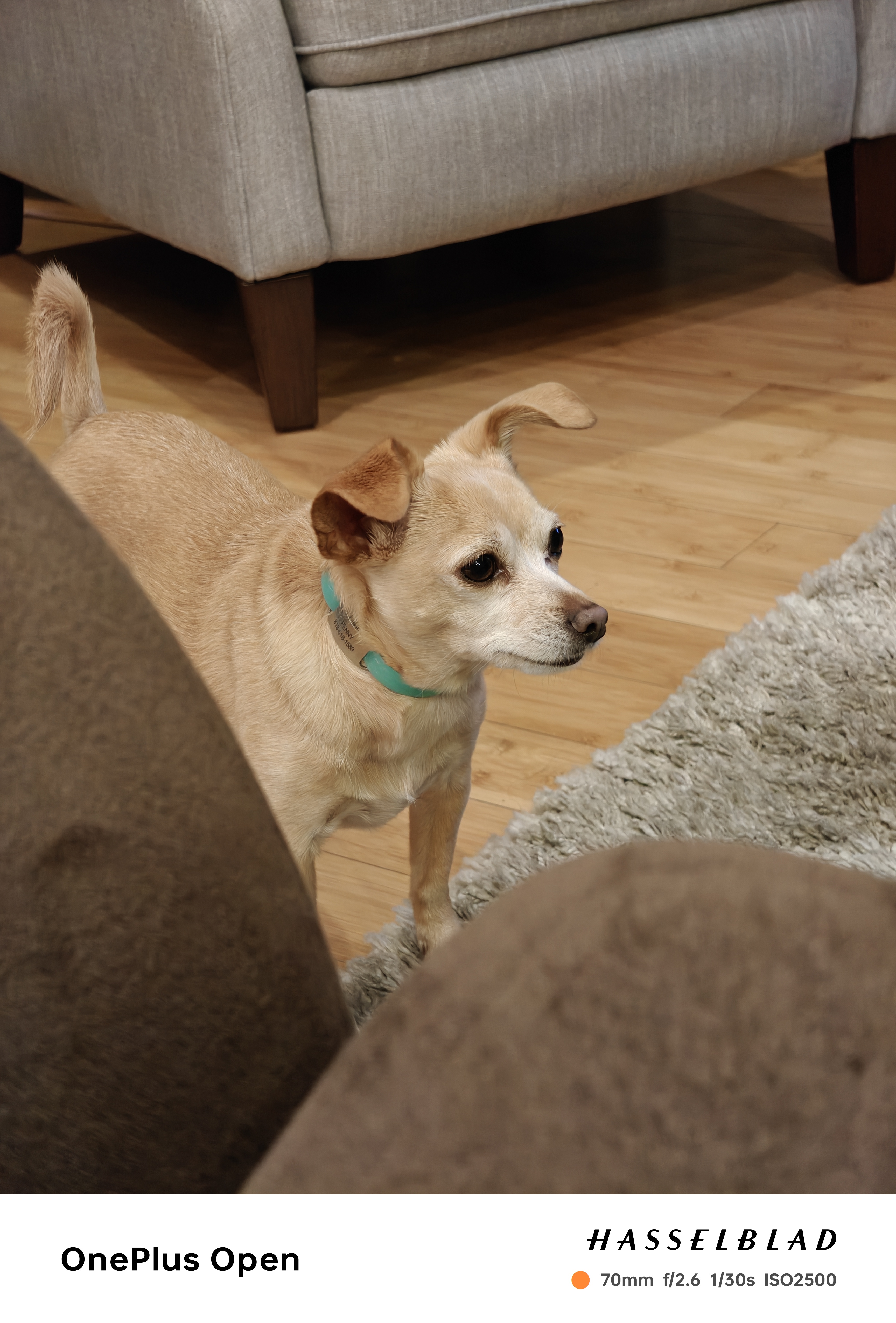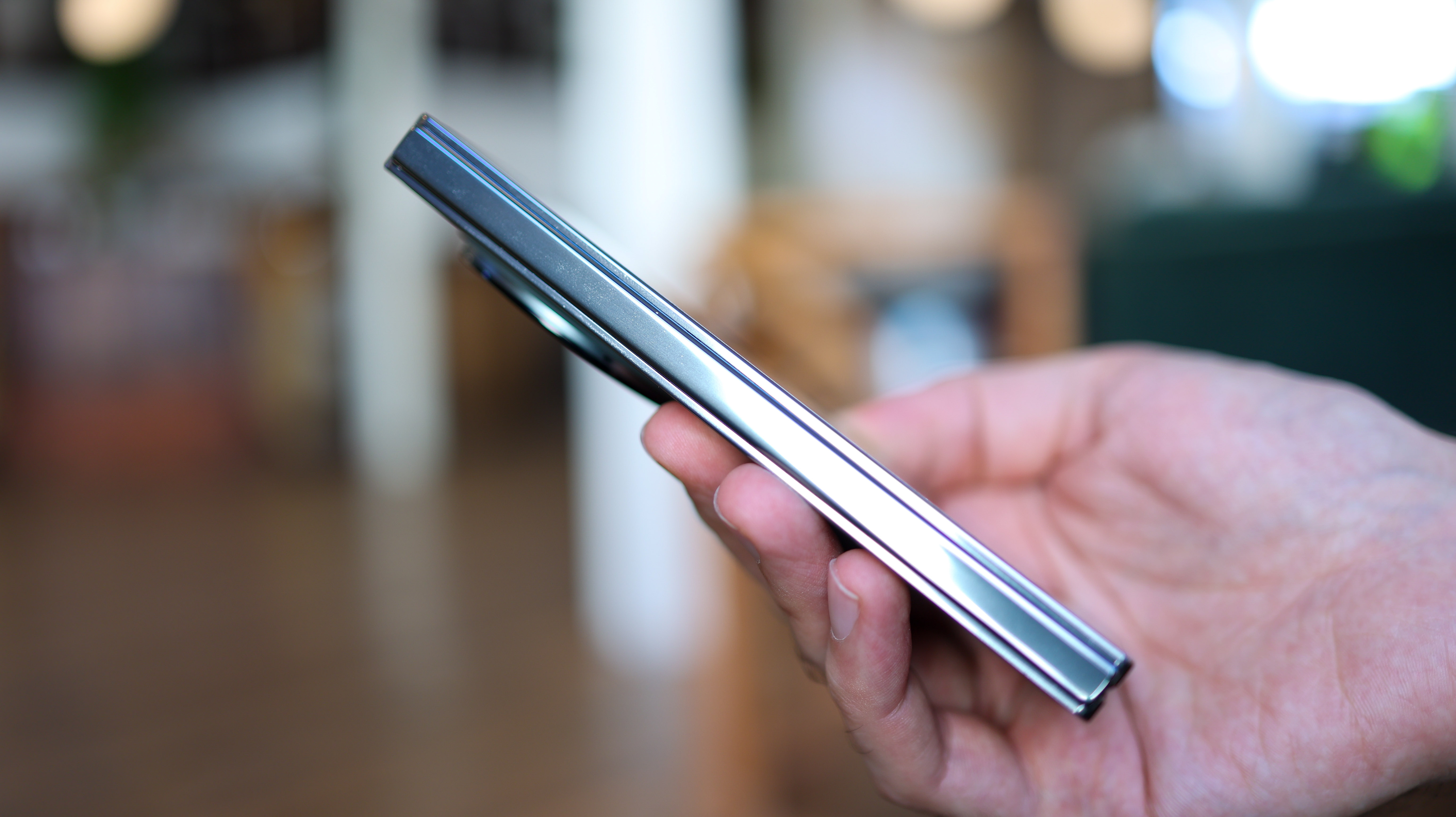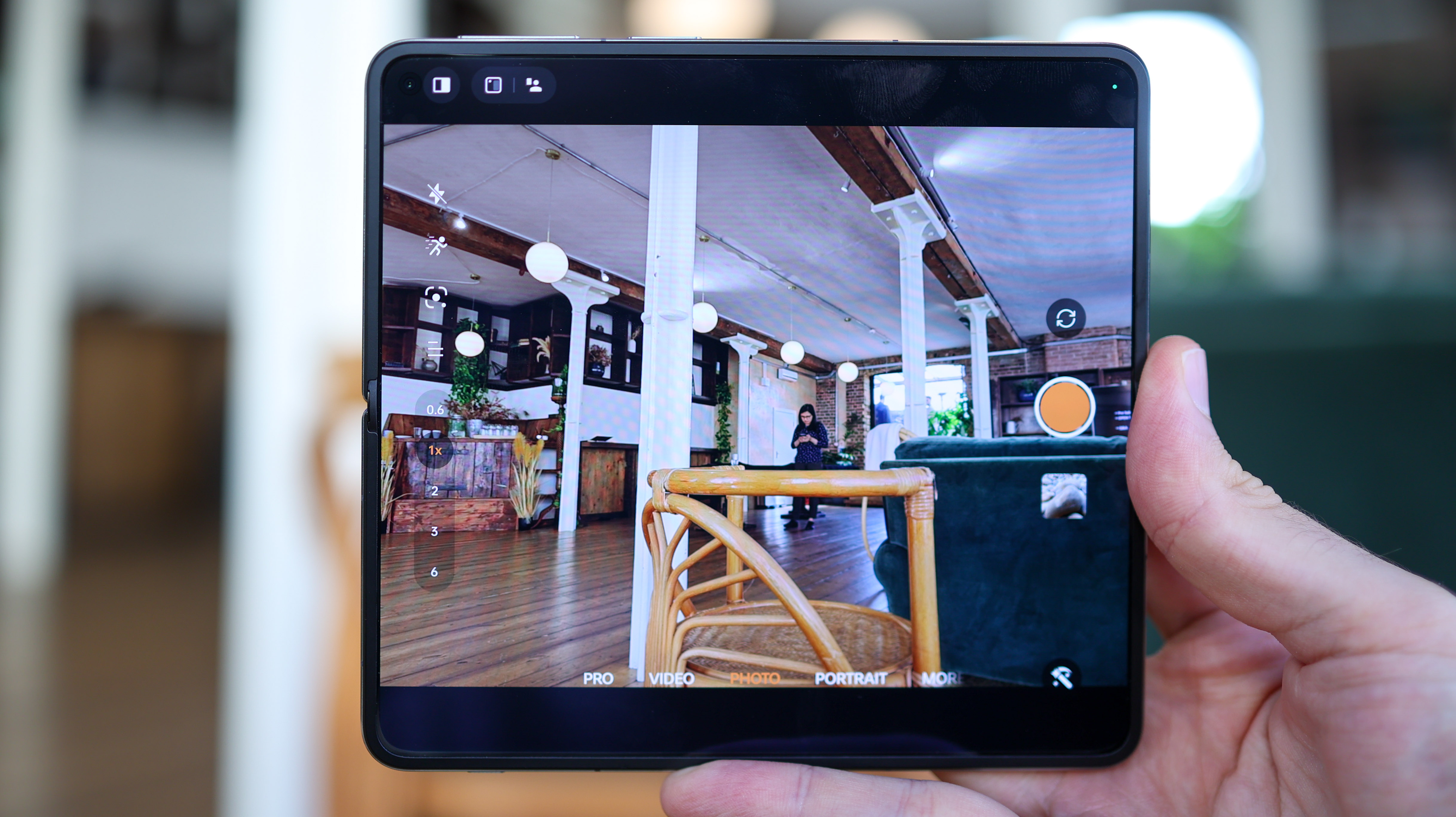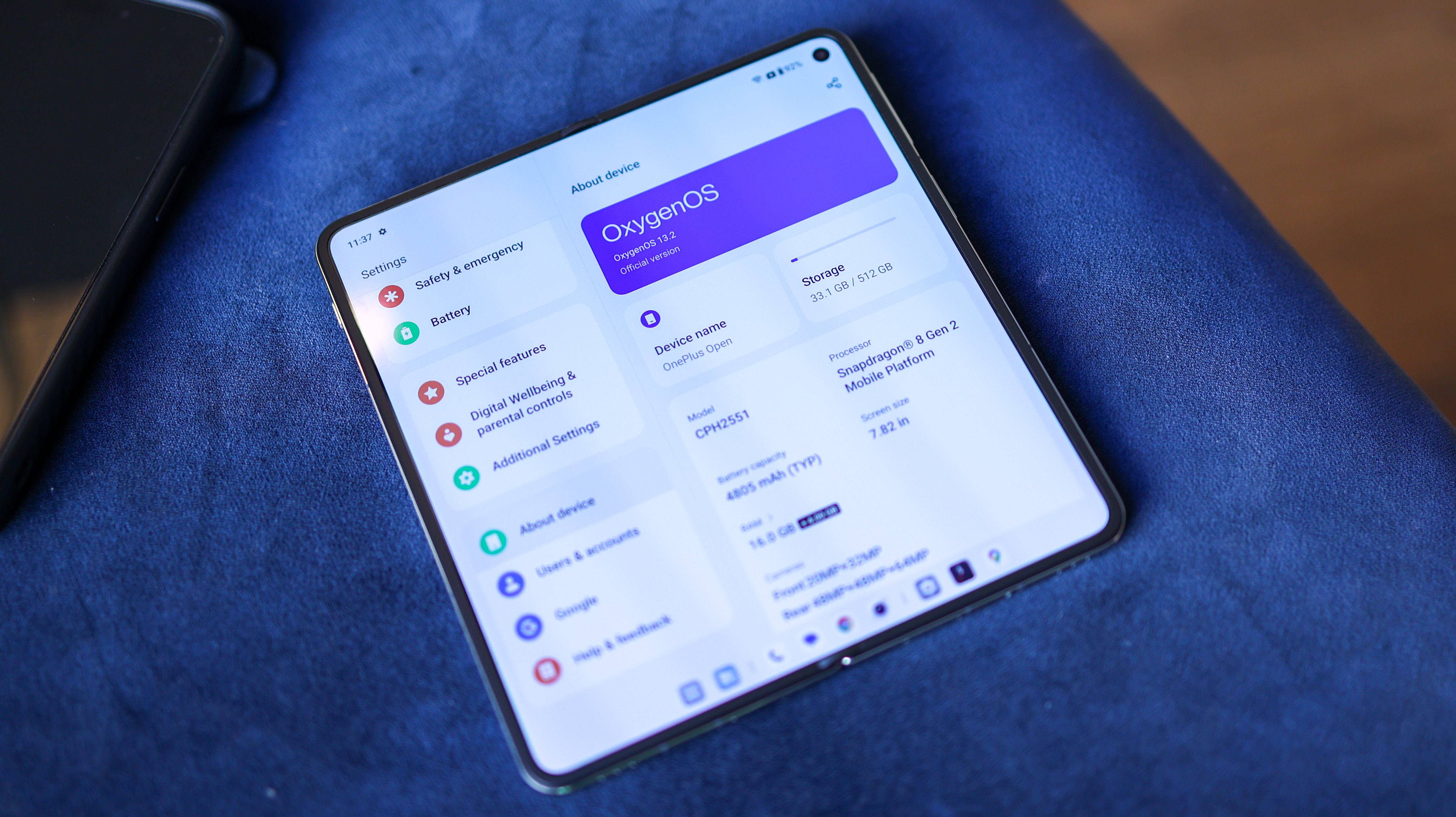Digital Camera World Verdict
The OnePlus Open isn't perfect – it misses out on wireless charging, isn't officially waterproof, and has a hefty camera bump – but if you're okay with all that, it's a fantastic camera phone and the best foldable for photographers. With two great screens, premium design, plenty of power and a smart interface, OnePlus's debut takes the fight to Samsung and wins – at least until the Z Fold 6 launches later in 2024.
Pros
- +
Excellent camera system
- +
Great screens
- +
Smart interface
- +
Premium design
Cons
- -
Very expensive
- -
No wireless charging
- -
No IP-rated waterproofing
Why you can trust Digital Camera World
If you’ve been following the evolution of folding phones, you’ll know that for all their wins – two screens in one device, wow-factor, smart features – they all miss out on excellent cameras, but the OnePlus Open is poised to buck this trend.
With key competition being the Google Pixel Fold and Samsung Galaxy Z Fold 5, the OnePlus Open has two real objectives if it wants to win us over – be cheaper and be better. Out of the gate, it’s already nailed the latter, undercutting both. But what does it do to stand out alongside the best from Google and Samsung?
Firstly, it packs actual flagship camera hardware. The wide camera has the same sensor tech as the super-premium Sony Xperia 1 V, with stacked pixel technology and a relatively large sensor size. The ultra-wide camera has autofocus and a pretty large 1/2-inch sensor, and the telephoto camera isn’t a typical pancake setup, it’s a periscope camera.
But can the rest of this phone stack up to its camera hardware, or is the OnePlus Open a winner on paper, but a loser in real life?
OnePlus Open: Design
The first thing we noticed about the in-hand feel of the OnePlus Open was how flat the sides were. While many phones seem to have curved sides to make them feel thinner, the OnePlus Open’s flat metal sides actually add to its in-hand impression. This might sound like a criticism – thick phone = bad design – but it’s actually helpful in making the open easy to grip and unfold, something the Pixel Fold isn’t.
The phone also has a familiar, phone-like shape. It’s not super-squat like the Pixel Fold and isn’t super-tall like the Samsung Galaxy Z Fold 5. Instead, its footprint is like a slightly smaller 20:9 phone, making it feel more natural to hold when closed than its main competitors.
Turn it around, and the OnePlus Open has one big camera bump. It’s almost comical how oversized it is on first impression; after all, the rest of the phone is relatively thin at 6mm when open and 11.9mm when closed. Of course, if a big bump means a great camera, we're not complaining.
The best camera deals, reviews, product advice, and unmissable photography news, direct to your inbox!
The OnePlus alert slider is back, alongside the typical selection of ports and buttons – volume and power buttons and a USB-C port and SIM tray. The phone boasts three speakers and comes in two finishes: vegan leather or frosted glass.
Unfold the phone, and you’ll get a different hinge feel to Google and Samsung’s phones. While Google's is very (very) stiff, locking very securely at almost any angle throughout its range, and Samsung’s is a little less so, the OnePlus Open is the springiest of the bunch. Out of all three, it feels less geared to part-folded use, although it can stay open between roughly 45º and 145º before springing open or closed.
Once open all the way, the OnePlus Open has almost square dimensions, and its squircle shape and even border make it seem less cumbersome than the Pixel Fold, which has a heavy bezel above and below the screen. Its flat sides make it easy to grip, and weighing 239g in vegan leather and 245g in glass, it’s no heavier than a big phone like an iPhone 14 Pro Max, so it feels surprisingly comfortable for long bouts of use.
Samsung and Google do best OnePlus with their IP-rated weatherproofing, so it isn’t a clean sweep for the Open, though OnePlus claims its phone can handle a splash even without an IP rating.
OnePlus Open: Screens
While past foldables like the Honor Magic Vs have compromised with either the outer or inner screen specs, the Open seems to have two quality panels on paper.
The front screen is 6.3 inches, and the inner screen is 7.8 inches. Both are 120Hz AMOLED panels with a max brightness of 1400 nits (this fires up when in direct sunlight), both sport high-resolutions with over 425 pixels in every inch of screen, and they also have Dolby Vision and HDR10+ credentials.
Interestingly, OnePlus taps into the screens’ HDR credentials (which ups the max spot brightness to an eye-searing 2600 nits) with a feature it calls ProXDR. This captures photos with HDR information, pumping out a wider dynamic range when viewing them on the phone itself, particularly with highlights.
After a few weeks with the phone, the overall impression of the screens is very positive. In fact, from a quality point of view, it’s entirely positive – this is the most invisible crease we’ve seen on a foldable to date, and the picture is inky, punchy, bright, and balanced – but there’s a slight issue with the screen shapes, specifically for gamers.
The front screen is great for messaging and even watching back super-wide-screen movies, but it is small for serious bouts of (on-screen) button bashing, especially if you have big hands. Meanwhile, the inner screen is too square for most games, so that’s our one caveat regarding the OnePlus Open’s displays' mostly positive impression.
OnePlus Open: Camera specs
There are three cameras around the back of the phone, and all three capture with high resolution, relatively large sensors, and wide apertures.
Wide: The wide sensor is a Sony LYTIA-T808, a 52MP 4.3:3 stacked pixel sensor, which is interesting because it actually uses a 48MP 4:3 area for photos. It’s matched with an f/1.7 lens with OIS, and has a wide 24mm equivalent focal length.
Ultra-wide: OnePlus's ultra-wide camera includes a 1/2-inch Sony IMX581 sensor and an autofocusing f/2.2 lens with a 14mm equivalent focal length.
Telephoto: Finally, the telephoto camera is a 3x zoom equivalent periscope camera with another 1/2-inch sensor, this time from OmniVision, and a relatively wide f/2.6 lens and a 70mm equivalent focal length.


Being a OnePlus phone, a few Hasselblad elements are dotted about the UI, including a portrait mode that emulates the look of Hasselblad lenses, a Hasselblad Pro Mode, and XPan mode for super-wide snaps. The automatic photo mode also benefits from Hasselblad tuning, which has historically served OnePlus phones very well, with the OnePlus 11 taking excellent photos for its price.
Video fans should appreciate the fact the OnePlus Open records 10-bit Dolby Vision HDR video at up to 4K 60fps from the wide camera and 4K 30fps from the telephoto camera.
OnePlus Open: camera review
It doesn’t take long to realise the OnePlus Open camera is the best of any foldable out now, and a lot of that comes down to the OnePlus’s photo processing. It’s more subdued when it comes to exposure and saturation than the Samsung Galaxy Z Fold 5, takes significantly more detailed photos than Google’s Pixel Fold, and manages to level up that OnePlus look we’ve grown to appreciate thanks to upgraded camera hardware.
Shots from the main camera enjoy abundant shadow detail, a relatively shallow depth of field when capturing close-up subjects, and balance across a scene, doing especially well in challenging mixed lighting. The auto night mode kicks in to deliver exceptional results even in low light. Unlike other foldables, we never found ourselves propping the OnePlus Open up to capture a lowlight shot – handheld; it captures a great shot nine times out of 10 just fine.







The telephoto camera isn’t quite as adept in low light as its wide counterpart, but it isn’t bad by any means, outperforming the Pixel Fold and Z Fold zoomers at night. More notable is the optical quality achieved by its periscope lens. With a closest focus distance of around 20cm, the tele camera nails product shots and almost becomes a make-shift tele-macro camera of sorts. It’s also impressive for portraits too.
The ultra-wide is the least standout of the rear camera mix, but it still does a respectable job. Packing autofocus with a nearest focus distance of 4cm, it takes close-up macro shots with an action camera FOV and can go wide for landscapes and mid-wide shots that demand a less shallow depth of field, document scans, for example.






Video shot on the OnePlus Open also looks solid, with well-stabilized footage packed with detail. While the wide camera works well in tough lighting or with rigorous movement, the secondary cameras struggle. The Dolby Vision video is a real highlight though, especially when capturing sunsets and other tonally broad scenes.
OnePlus has struck a great mix of processing, quality sensors, and impressive lenses on its first foldable, not only making its best camera phone to date but also making the best foldable camera phone by some margin.
The main criticism against the OnePlus Open’s camera is colour inconsistency across lenses, and limited zoom range compared to lower-cost non-folding phones like the Pixel 8 Pro and Galaxy S23 Ultra. If you just want the best camera phone out now, you're still better off with a non-folding alternative, but when set against its folding peers, the OnePlus Open's camera is a standout winner.




OnePlus Open: performance and battery
Running OnePlus’s OxygenOS 13 (built on Android 13), if you’ve used a OnePlus device before, expect familiar elements but updated for a big, unfolded display. While OxygenOS on the OnePlus Pad struggled to flex across its tablet-sized screen, it does a much better job this time.
When closed, the phone’s a phone – there’s nothing too special here. It’s Android through and through, with a few highlights we’ve seen before. Unfolded, though, the Open introduces a new feature called Infinite Canvas, which takes split-screen multi-tasking to another level, turning it into off-screen multi-tasking.
When Infinite Canvas is active, you can run up to three full-screen apps simultaneously, two side-by-side and one docked above. When one is in view, it takes up the whole screen, and you can swipe another into view to push your active app out of frame. While this sounds complicated, it’s easy to use and intuitive. It’s also flexible, so you can resize your Infinite Canvas apps to split-screen, so you can have up to three phone-sized apps open, two on-screen at a time, swiping one in while pushing one out.
We’ve often complained that foldables aren’t optimized to take advantage of the big screens within or their foldable form, so it’s great to see the OnePlus Open nail an aspect of unfolded usability.
This extends to the camera – you can shoot with the phone open and use the front display as a viewfinder, and you can also part-fold the phone for half-folded capture. This part-folded experience isn’t as accomplished as Samsung’s on the Z Fold 5, only working with a couple of apps on the OnePlus Open.
While the OnePlus Open does support pen input technically – specifically the OPPO Pen, which launched in China for the Find N2 – you can’t buy the pen in The West, so Samsung’s wider S Pen availability will make the Z Fold 5 a better choice for anyone looking to take handwritten notes on their foldable.
When it comes to power, though, the OnePlus Open and Fold 5 are relatively evenly matched, both running with Qualcomm Snapdragon 8 Gen 2 chipsets. Loaded up with 16GB of LPDDR5X RAM and 512GB UFS 4.0 storage, though, OnePlus bests Samsung on the value for money front. And with a 4800mAh battery and 67W flash charging powering it up fully in under 45 minutes, it lasts longer and charges faster than the foldable competition, though it misses out on wireless charging.
OnePlus Open: Verdict
After the iterative Samsung Galaxy Z Fold 5 launched, it felt like foldables were getting a little stale – ironic for a cutting-edge category of tech – but the OnePlus Open seems to have shaken things up, not least of all in the camera department.
With the best camera mix of any foldable, and photos that rival many non-folding flagships, as well as a powerful telephoto camera and the measured processing we’ve come to expect from OnePlus in recent years, the Open is an imaging triumph.
The fact there aren’t any major red flags in other areas helps OnePlus’s debut foldable leap to the front of the pack. If you’re thinking about picking one up – take note: it misses out on wireless charging and an IP rating – but if that doesn’t phase you, this is the first foldable we’ve been able to recommend based on its camera wholeheartedly.
Editorial note: Basil has worked with Oppo's communications agency as a consultant. OnePlus and Oppo are part of the BBK group. Basil has never worked with OnePlus directly or any of its agencies. Having worked with Basil for years, we are confident in his ability to review OnePlus devices fairly.
Want to know more about the OnePlus Open's competition? These are the best flip and fold phones flexing their features right now, and if you aren't sold on the fold, check out our guide to the best camera phones of 2023.
Basil Kronfli is a freelance technology journalist, consultant, and content creator. He trained in graphic design and started his career at Canon Europe before moving into journalism. Basil is also experienced in video production, independently running the YouTube channel TechEdit, and during his time at Future, he worked alongside the Digital Camera World team as a senior video producer.













